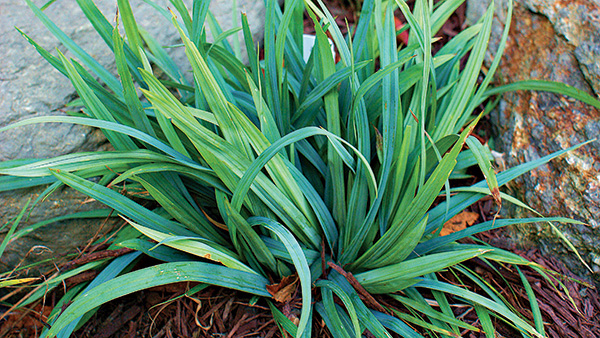
See regional picks for tough pretty plants, and read the article by Julie Lane Gray for even more ideas.
It’s important to define first what I mean by a “tough” plant. To my mind, it’s a plant that will thrive on its own as long as it is planted in a place that provides its basic needs and is given suitable water. It won’t retreat if it has aggressive neighbors, complain if it doesn’t get pruned for a year or two, and necessitate special treatment in order to look good. A pretty, tough plant is one that looks more delicate than it actually is.
Read more in Tough Yet Pretty Plants.
1. Brakelights® Red Yucca

Name: Hesperaloe parviflora ‘Perpa’
Zones: 5–10
Size: 24 inches tall and wide; flower spikes rise from 24 to 36 inches
Conditions: Full sun; average to dry, well-drained soil
Native range: Texas and Mexico
Stunning true-red tubular flowers set this variety apart from other red yucca. Though not a true yucca, this member of the agave family attracts hummingbirds and butterflies with summer blooms that stand tall above gracefully arching, blue-green foliage. A tough perennial with excellent heat tolerance, Brakelights® red yucca pairs beautifully with prairie grasses and showy perennials. This plant is widely adaptable, tolerating drought, erosion, and urban conditions. It’s a slow-growing native, producing a compact basal clump of evergreen foliage.
2. ‘Denim ’n Lace’ Russian Sage

Name: Perovskia atriplicifola ‘Denim ’n Lace’
Zones: 4–9
Size: 30 inches tall and 36 inches wide
Conditions: Full sun; dry to average, well-drained soil
Native range: Central Asia
‘Denim ’n Lace’ Russian sage improves on a favorite perennial for hot, dry sites with stronger stems and a more compact, upright habit. Lacy, periwinkle blue flowers grace the garden from midsummer through frost, enticing hummingbirds and other pollinators over the long blooming season. The fragrant blooms are excellent for cutting and drying. Aromatic, gray-green foliage resists deer and rabbit browsing. Adaptable to a variety of soils, ‘Denim ’n Lace’ is also drought and salt tolerant.
3. ‘Red Midget’ Mexican Hat

Name: Ratibida columnifera ‘Red Midget’
Zones: 3–9
Size: 18 to 24 inches tall and 18 inches wide
Conditions: Full sun to partial shade; average to dry, well-drained soil
Native range: North America
This fuss-free prairie native takes the heat and keeps on blooming. Named for the distinctive cone at the center of each flower, Mexican hat blooms from late spring through frost, attracting butterflies and other pollinators. The central cone is surrounded by recurving, velvety red petals edged in gold. ‘Red Midget’ is a more compact variety, with fine-cut foliage and an open, airy habit. The plants are easily grown from seed and will self-sow. Plant it in large drifts for a naturalistic look. Mexican hat is drought tolerant and resists deer browsing.
4. ‘Furman’s Red’ Autumn Sage

Name: Salvia greggii ‘Furman’s Red’
Zones: 6–10
Size: 24 to 36 inches tall and 18 inches wide
Conditions: Full sun; average to dry, well-drained soil
Native range: Texas and Mexico
‘Furman’s Red’ autumn sage has proved its worth again and again in hot, sunny gardens. Pollinator magnets, the bright-red flowers cover plants in late spring and again in autumn, with scattered blooms throughout summer. Sweetly aromatic, the light green foliage remains evergreen throughout much of its range and resists browsing by deer and rabbits. Native to rocky slopes, the plants are drought tolerant and perform best with adequate drainage and no fertilizer. Autumn sage is a woody subshrub, so prune in early spring to maintain a compact habit.
—Kimberly Toscano is a horticulturist and garden designer from Stillwater, Oklahoma.


















Comments
Log in or create an account to post a comment.
Sign up Log in